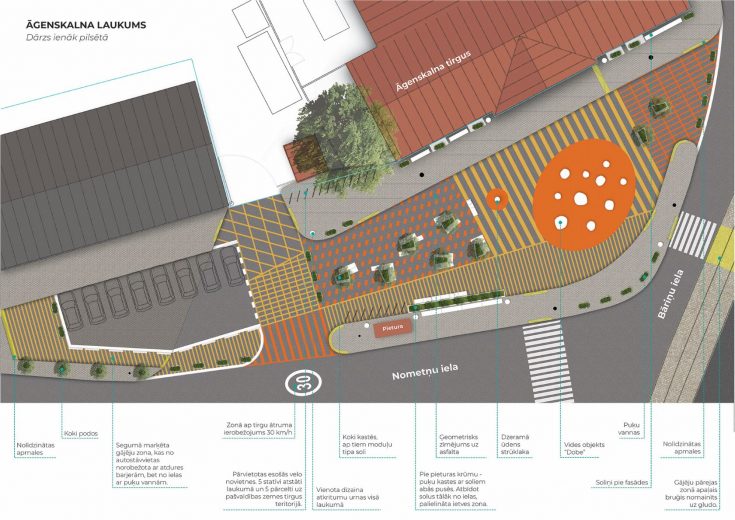Foto: Āgenskalna apkaimes biedrības publicitātes attēls
What is participatory budgeting? Where and when was participatory budgeting started? Is there participatory budgeting in Latvia and, if so, where and how is it being organized? In this article we try to respond to general questions you might have about participatory budgeting, by focusing on participatory budgeting in Latvia in particular.
What is participatory budgeting?
Participatory budgeting is a form of citizen engagement. Simply put, aim of the participatory budgeting is to involve people in the decision making processes, by giving people ability to decide about how their town’s or city’s budget will be used.
The first participatory budgeting system was started in 1990 in Porto Alegre, Brazil. It has now been adopted by over 1,700 cities worldwide. The concept is simple: citizens vote on how to spend a portion of the revenue generated from local taxes. That money can be allocated to various projects — depending on the community’s needs.
There is no single way to run a participatory budgeting program, and it can vary in scope. For example, some cities or regions use it to decide how to spend money on local infrastructure. Others use it to decide how to spend money on city programs. And still others use it to decide how to spend money on both infrastructure and programs.
Participatory budgeting on a national level
In addition to that, some counties have even used participatory budgeting on a national level. For example, in 2018 Portugal launched an initiative called Participatory Budgeting Portugal (PBP). PBP differs from other forms of PB not just on the level of its scope. Its budget was formally approved by Portugal’s National Senate, followed by creation of the Charter of Quality of Participatory Budgeting Portugal. This charter focuses on principles such as public regulation, continuity, transparency, deliberative and binding character, education for citizenship, equal access, among others. Similarly, PBP aims at integration that motivates “participation, engagement, trust and loyalty through law.”[1]
Participatory budgeting in Latvia
Participatory budgeting is a rather new citizen engagement model in Latvia. Centre for Public Policy PROVIDUS has reviewed participatory budgeting as a new form of citizen engagement in Latvia in an overview on the best case examples of citizen engagement in Latvia’s municipalities.
In addition to that, on October 17, 2019 Centre for Public Policy PROVIDUS organized an in-person seminar about participatory budgeting in Europe, where experts from Riga (Latvia), Tartu (Estonia) and Gdansk (Poland) shared their experiences of organizing participatory budgeting processes in their respective municipalities. See video below to learn more.
Which municipalities in Latvia have participatory budgeting?
To this date, only two municipalities in Latvia — Riga and Gulbene — have implemented it.
As Riga is the capital of Latvia and more than 600 thousand people live there, the scope of PB implemented in Riga differs from PB implemented in Gulbene Municipality. In Riga’s case, 500 thousand EUR are allocated for PB, with the maximum budget for one project being 50 thousand EUR (in 2019 and 2020, max. budget per project was 100 thousand EUR). In Gulbene Municipality, which is home for approximately 22 thousand people, total budget allocated for PB is 110 thousand EUR and maximum budget per project is 20 thousand EUR.
At the moment of writing this article (January 2022), some of the first winning projects from the vert first participatory budgeting in Riga, which was launched in 2019, have been finished. For example, a multi-functional sports field in Brasa (a neighborhood in Riga) has been open for public since July 23rd, 2021.
Other projects like area around Āgenskalns market, which was started in 2019, are still in the development process. Luckily, it’s possible to follow each project’s development in real time in the homepage of Riga’s PB project balso.riga.lv, where each winning project’s page has a time-line, which indicated in what stage project is at the moment and whether any progress has been made.

Recently PROVIDUS published a detailed infographic on PB in Riga and Gulbene in Latvian language, which allows to analyze and compare rules set for PB process in both municipalities.
Yet while only two municipalities use PB, it’s very likely to change in the future, as the new draft law on municipalities does include articles on participatory budgeting and its implementation (Articles No. 64, 65, 66, 67).
Time will show whether and how PB will be implemented all across Latvia!
For now, a good starting point for every municipality would be this summary, which outlines the basic steps for starting and implementing participatory budgeting.
[1] Meira Costa, Jorge (2018). “Participatory Budgeting (Portugal) as a marshalling legal process to formally and democratically defining European Monetary System and Policy” in Economic Alternatives, issue 2, 279-295[7].
Participatory budgeting: How to start in Latvia?
First example of participatory budgeting process on the national level
Pētījums “Iedzīvotāju iespējas iesaistīties lēmumu pieņemšanā Rīgā”
VIDEO. Diskusija par sabiedrības līdzlemtu budžetēšanu un pašvaldību budžetu atklātību
Piedalies aptaujā par līdzdalības budžeta ieviešanu Latvijā
Pārskats “Iedzīvotāju iesaistes piemēri Latvijas pašvaldībās”
